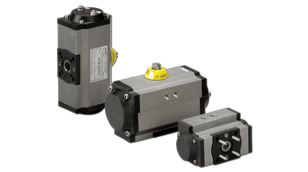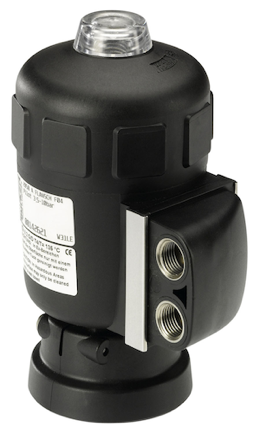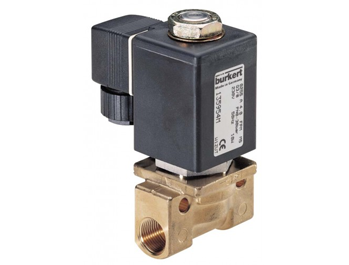
Where Are Pneumatic Actuators Used?
Pneumatic actuators are versatile components that are essential for automating and optimising operations across various industries. These devices use compressed air to generate motion, effectively converting air pressure into kinetic energy that can drive machinery, adjust controls, and automate complex processes. Understanding how these actuators work and their potential impact on making your operations faster, safer, and more cost-efficient can benefit your business.
The adaptability of pneumatic actuators makes them particularly valuable. They are designed to perform in environments where electrical and hydraulic systems could pose safety risks, such as in volatile or wet conditions. By ensuring precise control and rapid response, these actuators enhance your machinery’s performance and reliability, reducing the need for direct human intervention and lowering the risk of errors and accidents in your workplace. Their application ranges from simple machine operations to intricate robotic interfaces, underscoring their role in advancing industrial automation and productivity. Where are pneumatic actuators used? Well, the answer is everywhere.
Knowing Pneumatic Actuators
Pneumatic actuators convert energy from compressed air into mechanical motion, which is essential for automating and facilitating various industrial tasks. These devices are highly efficient, utilising air—readily available and easy to store—to operate cylinders and pistons that control mechanical movements. Using pneumatic actuators can lead to enhanced precision in tasks that range from simple lifting and moving to complex assembly processes.
The operation of these actuators is grounded in straightforward principles: they use air pressure to exert force on a piston within a cylinder, creating motion that can be linear or rotary. This motion is then applied to perform work, such as opening or closing valves, moving parts along an assembly line, or adjusting the positions of mechanical arms. The adaptability of pneumatic actuators to provide either type of motion makes them invaluable to operations across many industries, allowing for customisation to meet specific mechanical needs while maintaining high safety and reliability standards.
Key Applications of Pneumatic Actuators
Industrial Automation
Pneumatic actuators are indispensable in automation for their precision and reliability. They drive the machinery that manufactures everything from cars to consumer electronics, ensuring seamless and efficient operations. Assembly lines might use these actuators for tasks that require consistent and precise movements, such as pressing, bending, or cutting materials. The quick response time and repeatability of pneumatic actuators make them ideal for environments where high production rates and accuracy are critical.
Pneumatic actuators are employed in automation systems to improve safety and reduce the workload on human operators. By integrating these actuators, systems can perform more complex tasks with minimal human supervision, reducing the risk of accidents. Their hard-wearing nature makes them suitable for harsh industrial conditions too, offering long service life with relatively low maintenance requirements.
Automotive Systems
Pneumatic actuators are critical in the automotive industry, especially in automated production lines where precision and repeatability are vital. They are used to control the intricate processes involved in assembling vehicles, from installing dashboards to fitting windscreens. Using pneumatic technology ensures that these tasks are carried out swiftly and accurately, which is vital for maintaining the high standards of quality and safety expected in your vehicles.
These actuators are also essential in vehicle operation, particularly in systems like pneumatic brakes where reliability can be a matter of safety. The ability of pneumatic systems to provide controlled and predictable motion makes them ideal for applications where both performance and safety are your top priorities. The consistent force output and fail-safe operation underpin their widespread use in automotive engineering.
Material Handling and Packaging
The role of pneumatic actuators in material handling and packaging is critical due to their efficiency and strength. These actuators are commonly used in conveyor systems, automated packing machines, and robotics, handling products carefully and precisely. The adaptability of pneumatic systems allows for their use in various configurations, making them suitable for your specific packaging needs, whether it involves delicate positioning or repetitive heavy lifting.
Pneumatic actuators offer speed and energy efficiency advantages, which are crucial in high-throughput production environments. Handling and packing operations benefit from these actuators’ rapid cycle times and durability, ensuring consistent performance throughout long production runs. Their simplicity in design also translates to lower operational costs and easier maintenance, keeping production lines running smoothly without significant downtime.
Food and Beverage Production
In the food and beverage industry, the cleanliness and non-contaminative qualities of pneumatic actuators make them widely used and highly valuable. They are extensively used in manufacturing and packing processes where direct contact with a food product occurs, such as in bottling lines or food packaging processes. Pneumatic actuators provide the necessary force and movement without the risk of contaminating products, as they do not require lubrication that might compromise food safety.
These actuators can be specially designed to withstand the rigorous cleaning processes required in food production, resisting corrosion and surviving harsh cleaning agents. Food and beverage production lines benefit from the reliability and sanitary operation of pneumatic actuators, ensuring that products meet health standards while maintaining high throughput and efficiency in production while preserving quality and integrity throughout the process.
The Benefits of Using Pneumatic Actuators
Pneumatic actuators offer several benefits that make them the preferred choice in many industrial applications. One of the primary advantages is their cost-effectiveness. Your initial investment and ongoing maintenance expenses are generally lower with pneumatic systems compared to other types of actuators. This cost efficiency is due to their simpler design and fewer moving parts, which also contributes to their durability and reliability over long periods of use.
Safety is another significant benefit of using pneumatic actuators. They are inherently safe because they use air, a non-flammable resource, unlike hydraulic systems that rely on oil, which can pose a fire hazard in case of leaks. This makes them ideal for your operations in hazardous environments where safety is a paramount concern. Pneumatic actuators provide clean operation without the risk of environmental contamination, aligning with your commitment to maintaining eco-friendly processes. Their ability to operate effectively in diverse and demanding conditions enhances their utility.
The Challenges and Considerations of Pneumatic Actuators
While pneumatic actuators are highly beneficial, they come with their own set of challenges and considerations that require careful planning and management. One significant challenge is the dependency on a consistent supply of compressed air, which must be clean and dry to avoid damage and ensure efficient operation. This requirement can necessitate additional investments in air treatment systems, such as dryers and filters, which may increase your setup costs.
Pneumatic systems can be less energy-efficient than other types of actuators due to potential energy losses through compressed air. Managing these inefficiencies requires thoughtful system design and maintenance to optimise air usage and minimise waste. Despite these considerations, the advantages of pneumatic actuators often outweigh these challenges, especially when the application demands high safety and reliability.
Pneumatic actuators are indispensable in many industrial settings, valued for their reliability, safety, and efficiency. In environments where safety is critical, they provide peace of mind through their flame-free operation and minimal environmental impact. Considering the benefits and challenges, it is clear that pneumatic actuators are more than just components; they are integral to maintaining continuous, safe, and efficient industrial processes. Whether you are involved in manufacturing, automotive, or food production, these actuators can significantly bolster your operational capabilities, ensuring that your processes run smoothly and effectively.
Contact BM Engineering
Now that you know where pneumatic actuators are best used, be sure to get in touch and speak with one of BM Engineering’s knowledgeable team members to see if we can provide a pneumatic actuator suitable for your requirements, or learn about our huge range of valves and accessories.
Contact us today by filling out our contact form, or alternatively, call our customer service team at 0141 762 0657 or email us at sales@bmengineering.co.uk.



